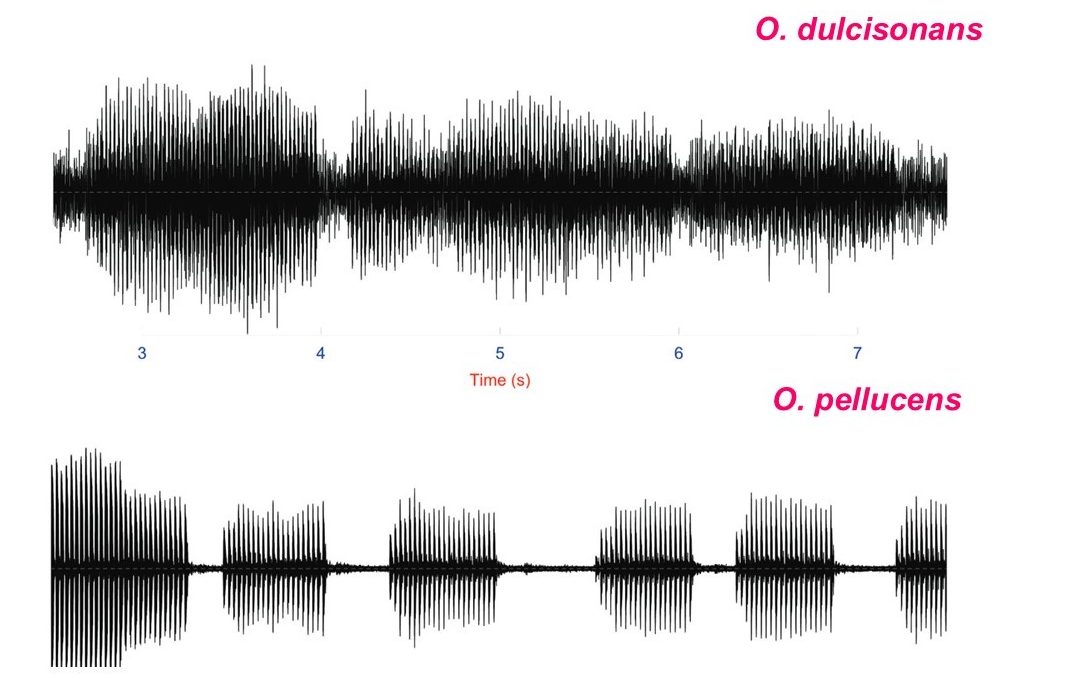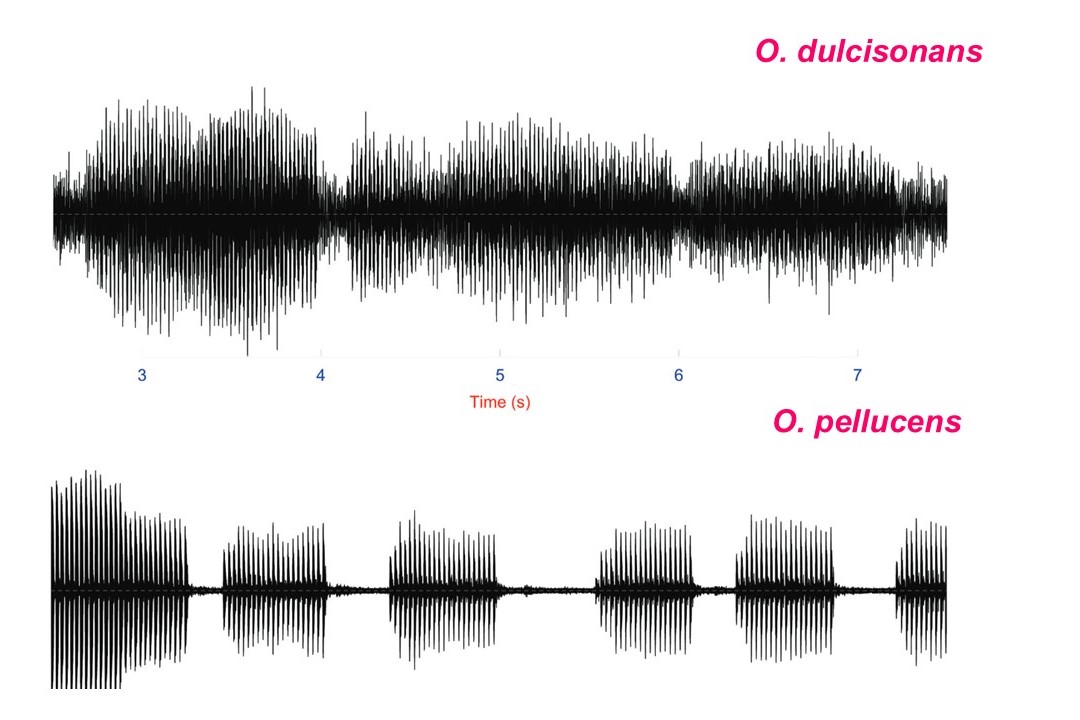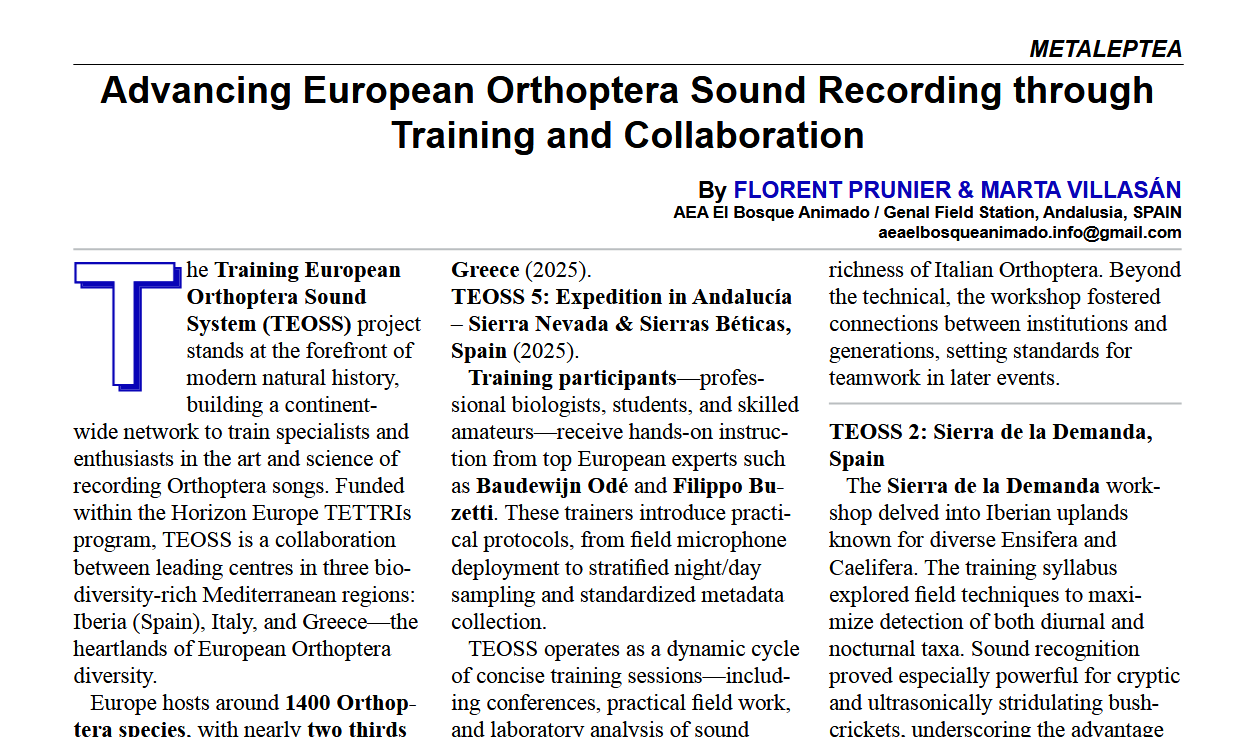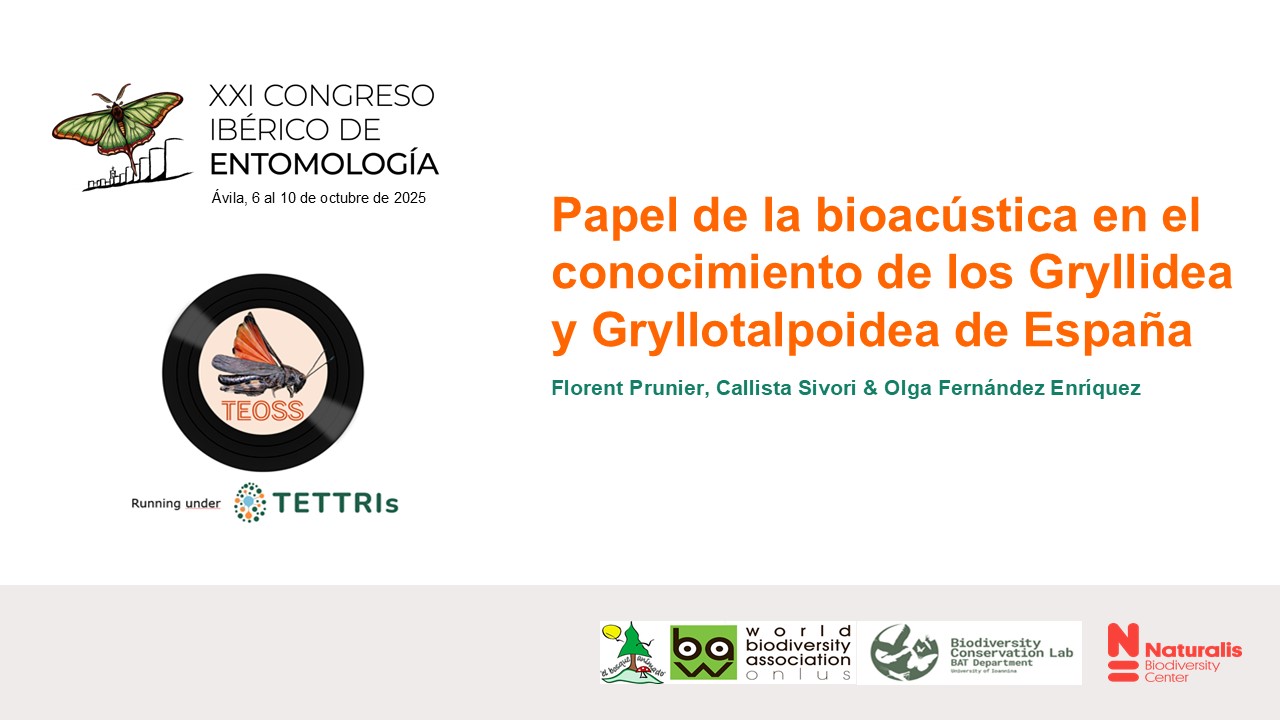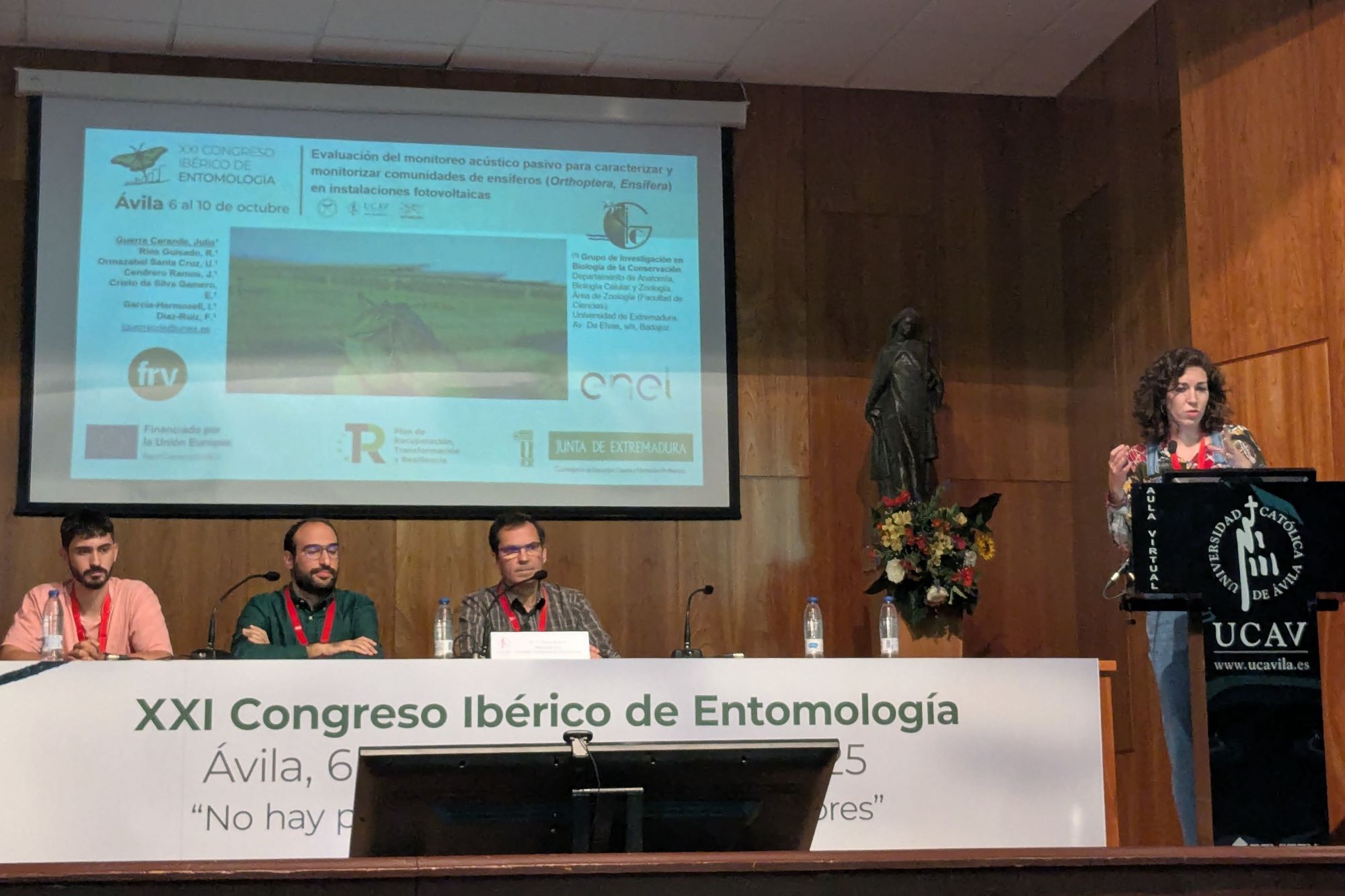With the arrival of autumn 2025, the TETTRIS-funded TEOSS phase is drawing to a close. Perhaps the project’s greatest success has been the formalization of a group of naturalists passionate about orthopterans and bioacoustics in Europe. The experience has been especially positive in Spain, where interest in this topic is growing rapidly.
We look forward to moving forward with more training courses, meetings, learning model designs, scientific expeditions, and direct exchanges with colleagues… Spoiler alert: we are working on a proposal to move forward, and we can even announce that we have already approved one for summer 2026.
The completion of TEOSS-TETTRIS is also synonymous with promoting the dissemination of the project and its results. The month of October was active with the publication of an article in the Metaleptea newsletter and participation in the 21st Iberian Congress of Entomology.
Metaleptea is the newsletter of the Orthopterist Society, arguably the most suitable publication for disseminating TEOSS advances among the scientific community. We reviewed the project’s progress throughout 2024 and 2025, with the notable organization of five major events attended by 117 students and professionals.
We were present at the Iberian Congress of Entomology (Congreso Ibérico de Entomología), organized by the Spanish Association of Entomology and held in Ávila, with a presentation dedicated specifically to crickets and mole crickets, presenting case studies where bioacoustics facilitates the detection and identification of species such as Natula, Oecanthus, Gryllotalpa, and Eugryllodes.
Also present was our colleague Julia Guerra Carande from the University of Extremadura with a very TEOSSian presentation… Evaluation of passive acoustic monitoring to characterize and monitor ensiferan communities (Orthoptera, Ensifera) in photovoltaic installations. This study is perhaps the first carried out in Spain combining four sampling methods to document the orthoptera of a locality.

